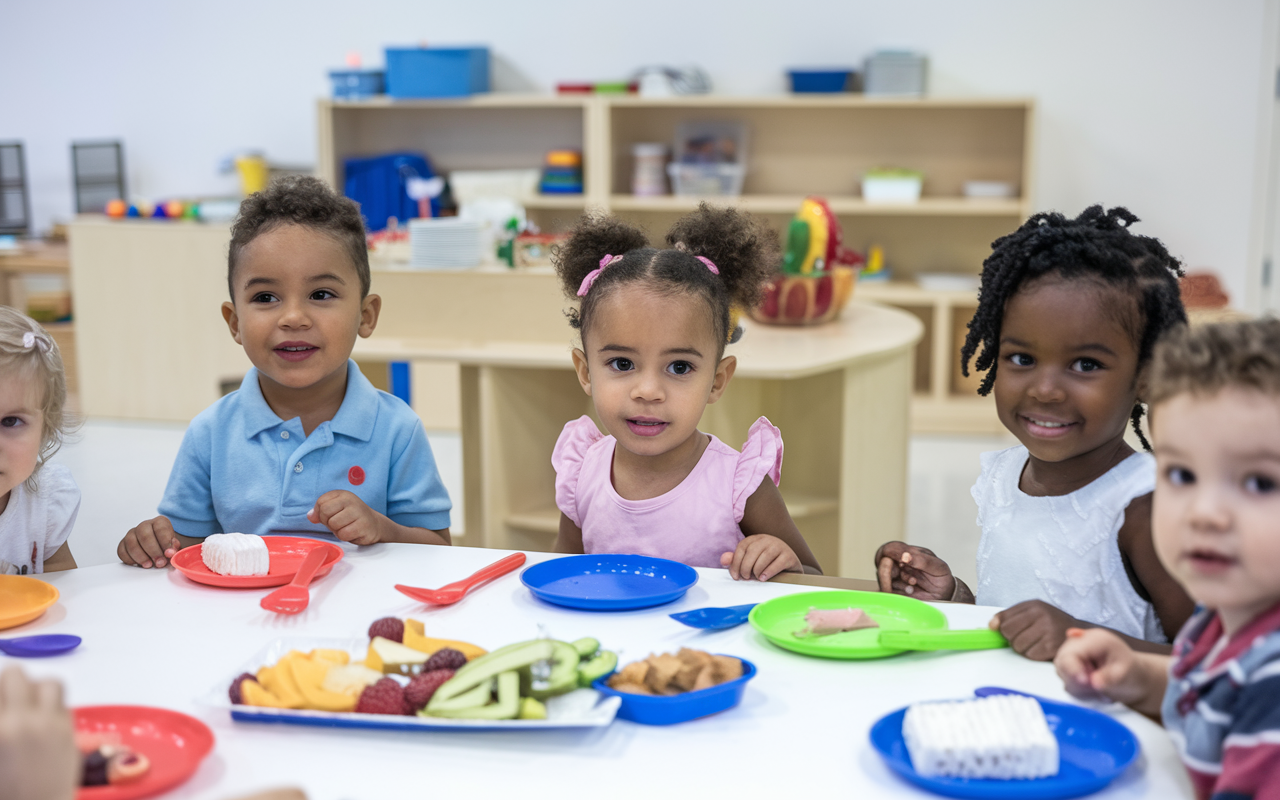
Helping every child eat, grow, and thrive begins with how we approach mealtimes in early learning settings.
More than just a break to refuel, these moments shape confidence, inclusion, and trust. This May, in recognition of Allergy Awareness Month, we’re focusing on how thoughtful mealtime routines can support allergy-safe practices while creating a welcoming environment where every child feels safe and supported.
Model Inclusion at Mealtimes
Creating an inclusive mealtime environment starts with ensuring that children with allergies feel just like everyone else — safe, included, and confident. Meals are intentionally crafted to closely match the regular menu in appearance, texture, and colour. By carefully selecting ingredients and designing replacement meals that mirror the look and feel of the main menu, children can enjoy their meals alongside their friends without feeling different. For example, if the main menu features pasta with a creamy sauce, a replacement meal might include gluten-free pasta with a similar-looking dairy-free sauce. This thoughtful approach helps foster a sense of belonging and builds confidence during mealtimes — supporting both emotional and social development.
Set the Tone with Calm Confidence
Children take emotional cues from the adults around them. Approaching allergy-safe mealtimes with calm confidence helps children feel secure, supported, and included. Simple, reassuring language such as, “This snack is just right for you — just like your friends’ snacks are perfect for them,” can normalise dietary differences and reinforce belonging. A calm, positive approach not only reduces anxiety but also strengthens emotional resilience — both for children managing allergies and their peers.

Make Allergy Awareness Part of Everyday Conversations
Normalising allergy-safe foods through everyday conversations builds understanding and promotes inclusion. Discussing different foods — like soy, quinoa, coconut, or lentils — as part of learning activities can make allergy-safe ingredients feel familiar and interesting to all children. These regular, casual conversations encourage curiosity, reduce stigma, and empower children to respect one another’s needs confidently and kindly.
Build Reassurance Through Routine
Predictable routines help create a safe, inclusive environment at mealtimes. Practices such as assigning seating, clearly labelling meals, and verifying ingredients build consistency that reassures children, families, and educators alike. Embedding these habits into the centre’s daily rhythm also strengthens operational safety, giving educators and directors confidence that allergy-safe practices are consistently upheld. These small daily actions go a long way in building a sense of security for children, families, and staff.

Partnering with Parents: Supporting Municipal Guidelines
Strong, proactive communication with families is essential to allergy-safe care — and it supports AQI guidelines for health, safety, and parent engagement. Keeping families informed about menus, ingredient changes, and safe handling procedures builds a foundation of trust. Regularly updating medical and dietary information and encouraging families to clarify any questions early shows a collaborative approach — a key component of meeting AQI expectations. Clear labelling of meals and accurate identification of ingredients reinforce operational safety and demonstrate transparency to parents. When families feel heard, informed, and involved, it builds confidence in your centre — helping to deepen family satisfaction, loyalty, and community trust.
